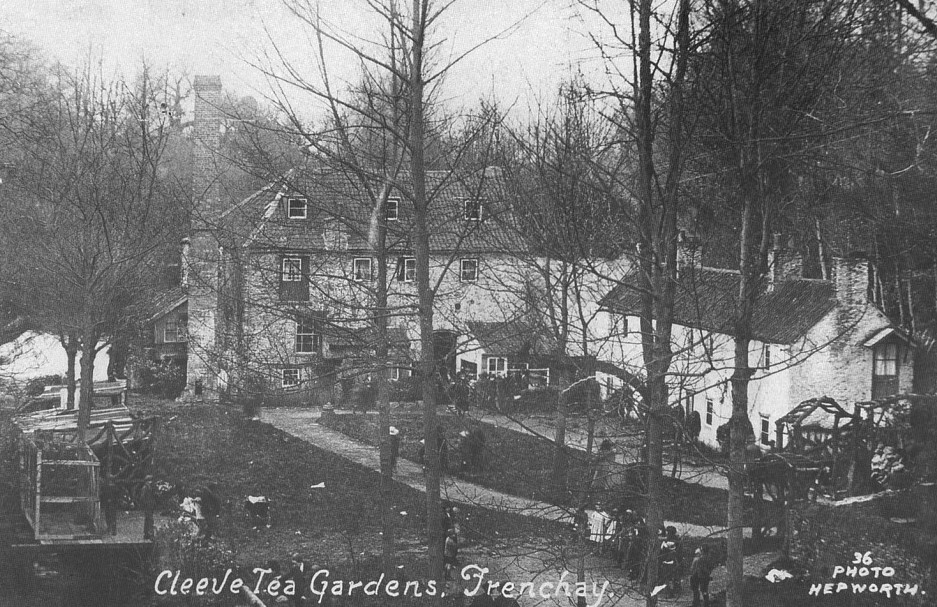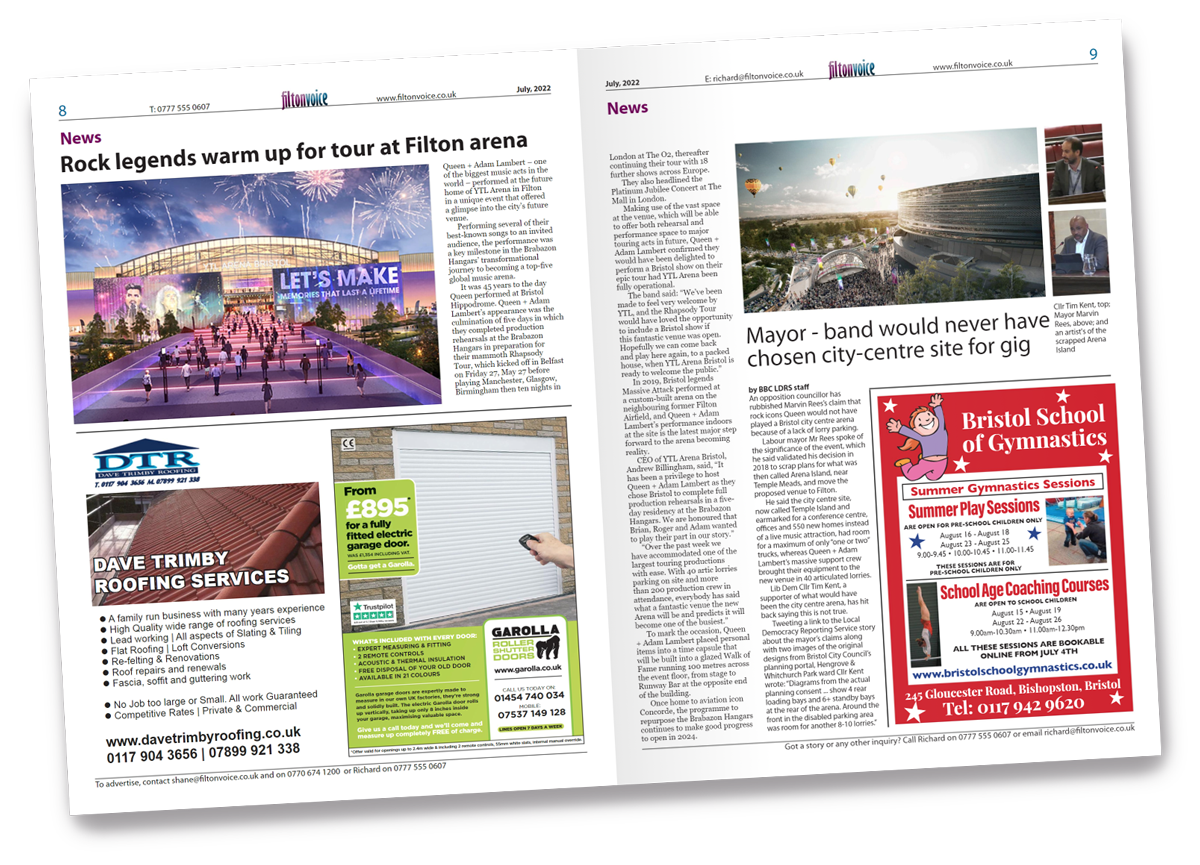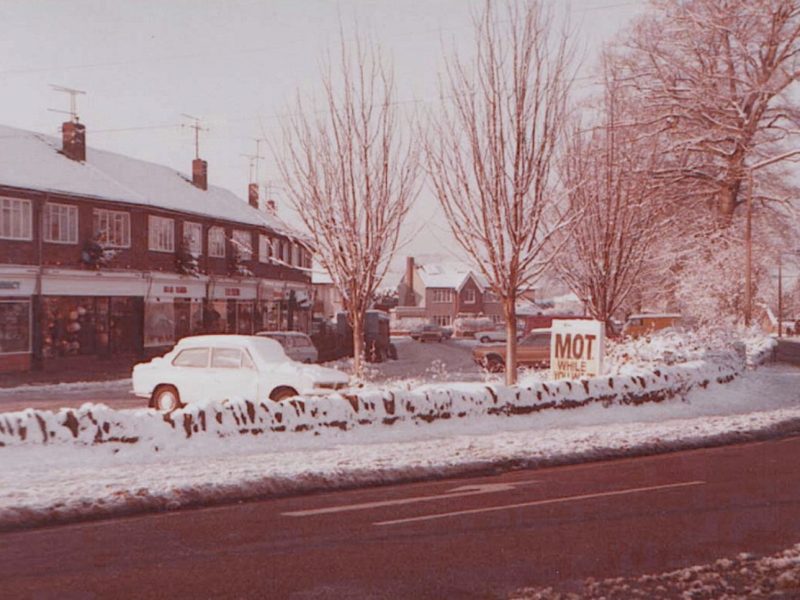Malcolm Coles, a member of the former Downend Local History Society, and Adam Jones of West 70 Photography have produced this history of the shops built nearly 70 years ago on what was once part of a country estate.
HISTORICALLY, Downend, like
Staple Hill, Soundwell and Moorend, was part of the Mangotsfield parish mentioned in the Domesday Book of 1086.
Until the mid-1920s, Downend was a small rural community with a few large houses and farms, alongside cottages for farm workers and quarrymen.
The landed gentry resided here, with the Cave family, prominent bankers, becoming the largest landowners after 1805.
Their family home, Cleve Hill, had an entrance that can still be seen at the top of Croomes Hill, where the thatched cottage stands.
It featured a serpentine driveway and a tunnel under Cleeve Hill Road, near the tennis courts.
Cleve Hill House stood roughly where Cleeve Lawns is today.
Over the years, the Cave family expanded the property into a bow-fronted Georgian-style residence, which was ultimately used as a hospital for wounded soldiers during World War I.
The house’s final owner, Sir Charles Daniel Cave, leased the property to the government for this use.
A relative of his, Charles Henry Cave, became the hospital’s quartermaster and his wife, Beatrice, became commandant, overseeing its operation.
In September 1920, Sir Charles sold the 1,400-acre Cleve Hill Estate at auction, with much of the farmland bought by small builders.
This marked the beginning of Downend’s growth, which continued into the 1930s before World War II paused further development.
By then, new housing had emerged along the main roads – Badminton Road, Cleeve Hill, Bromley Heath Road, and Overndale Road – with additional roads branching off them.
The Cleve Hill Estate house was demolished in 1930.
The spelling difference between ‘Cleve Wood’ and ‘Cleeve Wood’ is notable.
The road Cleeve Hill appeared on maps dating back to the 1800s, next to Cleve Hill House with one less ‘e’, while the house Cleve Wood appears alongside Cleeve Wood Road.
In 1928, shops were constructed on Badminton Road to serve the new communities, now known as Downend High Street. Only two – the newsagent and the fish shop – retain their original trades to this day.
John Randall, a timber merchant from Fishponds, bought the house known as Cleve Wood in 1923.
His son opened the grounds of the house as Cleve Wood Pleasure Grounds, which included activities such as tennis courts and fishing.
Cleve Wood had frontage along the River Frome, as did the nearby Cleve Tea Gardens located at Cleve Mill, where many visitors enjoyed rowing boats along the river.
In 1945 the Randall family sold land fronting Cleeve Wood Road to the Malpass Brothers. The tea gardens closed in 1956.
The Malpass brothers were builders, who developed the area, although not by themselves, in the early 1950s.
The Malpass brothers later built and ran the car garage on the end of the shops, where petrol was sold along with car servicing and sales.
The Cleve Dale Flats, opposite the Cleeve Wood Road shops, were built in 1964 after the demolition of Cleve Dale House.
Initial businesses at Cleeve Wood Road included a small supermarket, an ironmonger, a grocer, a greengrocer, Brookmans Bakery (which closed in 2006 after 50 years), and a pharmacy, which is still in its original location and operating today. #
There was also a butcher. Brian Kearns and Bill Bevan worked for Noel Woodhall, who opened the butcher’s shop in 1956. When Mr Woodhall retired, it became known as Bevan and Kearns.
Brian Kearns eventually bought the business outright, and following its closure in January 1999, it became Cleeve Catering and is now a veterinary practice.
Other businesses that have operated at Cleeve Wood Road shops included Bidwells electric light shop, which is now West 70 Photography.
At one time or another Cleeve Wood Road shops was also home to a toy shop, video rental shop, sporting goods shop, women’s fashion shop and a newsagent.
The supermarket, now Co-Operative Funeralcare, and three adjoining shops (now Victoria’s Beauty, Style Collection, and CJ Hole) were built around 1960-61.
Initially, one of the units housed a district office of the Prudential Insurance Company.
There was also an off-licence called Roberts & Cooper, which became Arthur Cooper, later Peter Dominic and then Threshers, before a brief stint as a t-shirt printing shop. It is now home to estate agents CJ Hole.
If you have any further information about Cleeve Wood Road shops and the former businesses that traded please contact us, as we welcome information.
You can email info@cleevewood.co.uk or find out more at www.cleevewood.co.uk.




